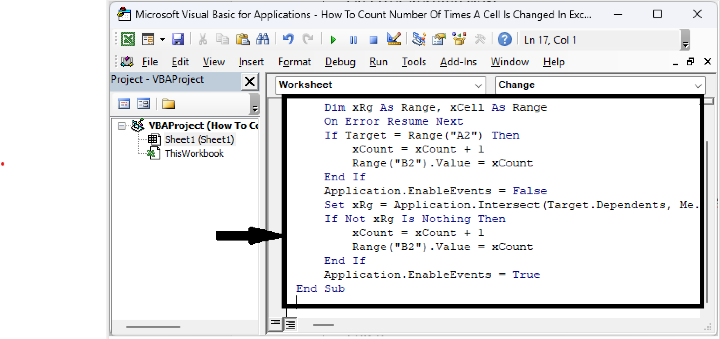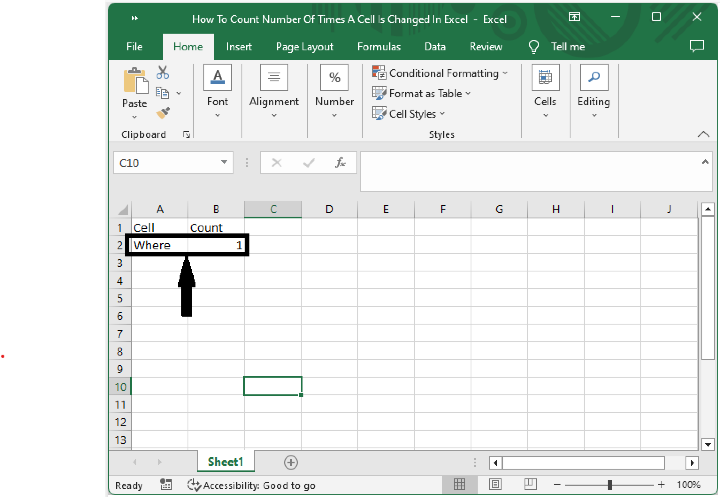
 Data Structure
Data Structure Networking
Networking RDBMS
RDBMS Operating System
Operating System Java
Java MS Excel
MS Excel iOS
iOS HTML
HTML CSS
CSS Android
Android Python
Python C Programming
C Programming C++
C++ C#
C# MongoDB
MongoDB MySQL
MySQL Javascript
Javascript PHP
PHP
- Selected Reading
- UPSC IAS Exams Notes
- Developer's Best Practices
- Questions and Answers
- Effective Resume Writing
- HR Interview Questions
- Computer Glossary
- Who is Who
How To Count Number Of Times A Cell Is Changed In Excel?
Tracking changes in Excel is important when you want to monitor the history of a specific cell or range of cells, especially in a collaborative environment where multiple users have access to the same workbook. By counting the number of times, a cell has been changed, you can easily keep track of the modifications made to a cell, and identify who made the changes and when they were made. In this tutorial, we will show you how to use a simple formula to count the number of times a cell is changed in Excel, and how to customize it to suit your needs. Whether you're a beginner or an experienced Excel user, this tutorial will help you improve your skills and become more efficient at tracking changes in your Excel workbooks. So, let's get started!
Count Number Of Times A Cell Is Changed
Here we will use the VBA application to complete the task. So let us see a simple process to know how you can count the number of times a cell is changed in Excel.
Step 1
Consider any excel sheet and right-click on the sheet name and select view code to open a VBA application, then copy the below-mentioned code into the text box as shown below.
Right click > View code > Insert > Module > Copy code.
Dim xCount As Integer
Private Sub Worksheet_Change(ByVal Target As Range)
Dim xRg As Range, xCell As Range
On Error Resume Next
If Target = Range("A2") Then
xCount = xCount + 1
Range("B2").Value = xCount
End If
Application.EnableEvents = False
Set xRg = Application.Intersect(Target.Dependents, Me.Range("B9"))
If Not xRg Is Nothing Then
xCount = xCount + 1
Range("B2").Value = xCount
End If
Application.EnableEvents = True
End Sub

Step 2
From now on, every time we change the value in cell A2, we can see the count in cell B2, as shown below.

Note
If we need to apply for a range of cells, we can use the below code ?
Private Sub Worksheet_Change(ByVal Target As Range)
Dim xSRg As Range
Dim xRRg As Range
Set xSRg = Range("B9:B1000")
Set xCell = Intersect(xSRg, Target)
If xCell Is Nothing Then Exit Sub
Application.EnableEvents = False
On Error Resume Next
Set xCell = xCell.Range("A1")
Set xRRg = xCell.Offset(0, 1)
xRRg.Value = xRRg.Value + 1
Application.EnableEvents = True
End Sub
Conclusion
In this tutorial, we used a simple example to demonstrate how you can count the number of times a cell is changed in Excel to highlight a particular set of data.

